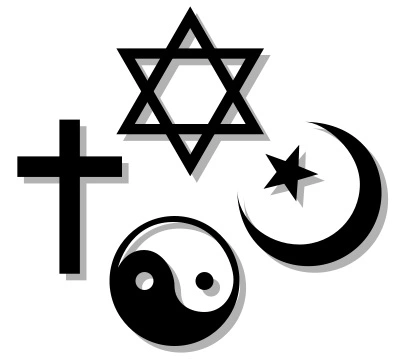animals and religion
Publié le 22/02/2012

Extrait du document

The symbolism and
role of animals in religion. Animals have had
a profound signifi cance for religion as far back
as religion can be traced. The famous Old Stone
Age cave paintings of game animals undoubtedly
had some kind of spiritual meaning. But meaning
and attitude have varied greatly from one
religious culture to another. In hunting cultures,
where animals are a major source of food and
their killing a mark of human prowess, hunting
is a religious activity, involving spiritual preparation
by such means as fasting, performing sacred
dances before setting out, and observing taboos
in the fi eld. PRAYERS may also be addressed to
the animal to be killed, and petitions made to a
"Master of Animals" deity believed able to give
or withhold game.
In many societies, especially early agricultural
or pastoral (herding) ones, animals have often been
the subjects of religious SACRIFICE. One example is
the religion of the ancient Hebrews. The rationale
is varied: It is believed that the savor of the offered
meat pleases GOD or the gods; that the sacrifi ce to
the highest of something economically valuable, as
animals certainly were, indicates faith and devotion;
that the life of the animal goes into the crops
and the community; or that the spirit of the animal
is a messenger on behalf of the people to the gods.
If the fl esh, after being offered, is then consumed
by the community, that sacred meal can be like a
holy communion with the gods and a way of reaffi
rming their identity.
On the other hand, the protection of some animals,
or of all animals, can also be viewed as a
religious obligation. In JAINISM, AHIMSA, or harmlessness
toward all animate life, is a way of affi rming
the sacred character of such life and the souls
within it. Many Hindus and Buddhists also practice
such harmlessness for spiritual reasons (see HINDUISM
and BUDDHISM). Sometimes certain animals are
protected and not killed because of their meaning
as the "totem," the emblem or animal protector, of
a community. Hindu India's well-known "sacred
cows" suggest compassion and the sacredness of
motherhood and all life to its people.
Animals also have widespread symbolic
meanings in religion. Religious art is full of animals.
Sometimes gods are portrayed as animals, or
as half-animal and half-human, like many Egyptian
deities (see EGYPTIAN RELIGION) or the Hindu
GANESA, with an elephant head and a human body.
In CHRISTIANITY, the Holy Spirit is often portrayed
as a dove. Many gods and Christian SAINTS have an
animal companion or symbol: the bull of SIVA, the
owl of ATHENA, the eagle of St. John. In such cases
the animal is usually said to embody a particular
virtue important to that fi gure: the bull as a token
of fertility, the owl of wisdom, the eagle of soaring
to the heights.
Animals are our companions and relatives
here on Earth. Yet because they cannot speak or
think exactly as we do, they are always objects of
mystery to humans. Given this, it is inevitable that
religion would make much of animals.
Liens utiles
- Relationship between religion, spirituality, and young Lebanese university students’ well-being.
- Otter Otters are water-loving animals found everywhere except Australia, New Zealand, and Antarctica.
- Pets. Pets, animals kept for pleasure and companionship, usually domesticated and
- Ear. I INTRODUCTION Ear, organ of hearing and balance. Only vertebrates, or animals
- Animals and ethics








